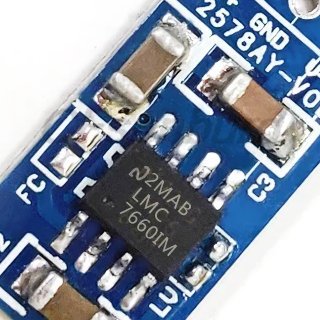Hello everyone,
I'm a software developer by trait, so I am a bit unsure about my current plans.
I need to generate some control voltages and figured a 12 bit resolution PWM signal after some filtering should be a good basis.
Now, the actual CV should be +/-4V, so some op-amp correction is necessary. I have simulated how a Teensy 4.0 12-bit PWM signal would perform over here:
http://falstad.com/circuit/circuitj...ueoAGIQKPgGyMEAAEQArgAXACeAB0AM4AYVnTgANrRmEA
Now, this is all fine. However, the op-amp needs to be powered, too.
For this, I wanted to use two 12V power supply packages, something like the IRM-01-12 by Mean Well.
I have used two of them to get dual rail power before, so this should work here as well.
However, because the Teensy will also be a MIDI receiver through its USB port, I need to either power the Teensy externally, or make sure that the two grounds won't mess with the signals.
The latter is where I am unsure: Should I connect the ground of my dual rail power supply with the Teensy's ground, or leave it as is?
I fear that, since these two grounds are sort of independent of one another, the signal reference could shift significantly.
Since the project is still in its infancy, I am very much open for any suggestion.
Preferably, I would like to power the Teensy with a 3.3V regulated source, such that all grounds are the same. But again, I am not sure if this is a problem to begin with.
/edit:
Oh yea, the 1.65V in the simulation above is just hard-'coded', it would originate from the dual rail power supply and a voltage divider + op amp.
I'm a software developer by trait, so I am a bit unsure about my current plans.
I need to generate some control voltages and figured a 12 bit resolution PWM signal after some filtering should be a good basis.
Now, the actual CV should be +/-4V, so some op-amp correction is necessary. I have simulated how a Teensy 4.0 12-bit PWM signal would perform over here:
http://falstad.com/circuit/circuitj...ueoAGIQKPgGyMEAAEQArgAXACeAB0AM4AYVnTgANrRmEA
Now, this is all fine. However, the op-amp needs to be powered, too.
For this, I wanted to use two 12V power supply packages, something like the IRM-01-12 by Mean Well.
I have used two of them to get dual rail power before, so this should work here as well.
However, because the Teensy will also be a MIDI receiver through its USB port, I need to either power the Teensy externally, or make sure that the two grounds won't mess with the signals.
The latter is where I am unsure: Should I connect the ground of my dual rail power supply with the Teensy's ground, or leave it as is?
I fear that, since these two grounds are sort of independent of one another, the signal reference could shift significantly.
Since the project is still in its infancy, I am very much open for any suggestion.
Preferably, I would like to power the Teensy with a 3.3V regulated source, such that all grounds are the same. But again, I am not sure if this is a problem to begin with.
/edit:
Oh yea, the 1.65V in the simulation above is just hard-'coded', it would originate from the dual rail power supply and a voltage divider + op amp.



